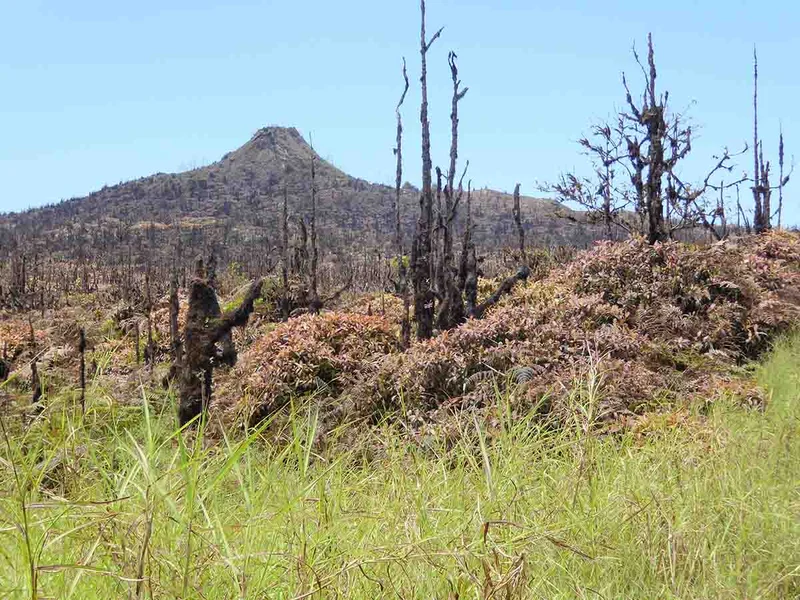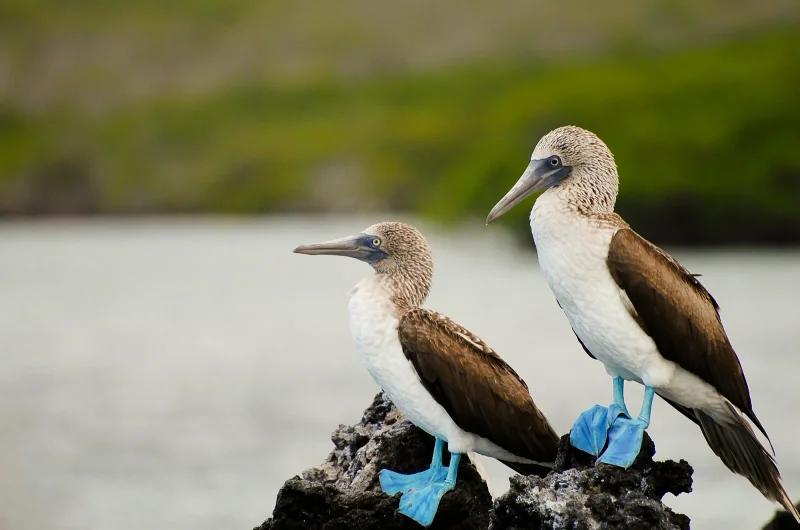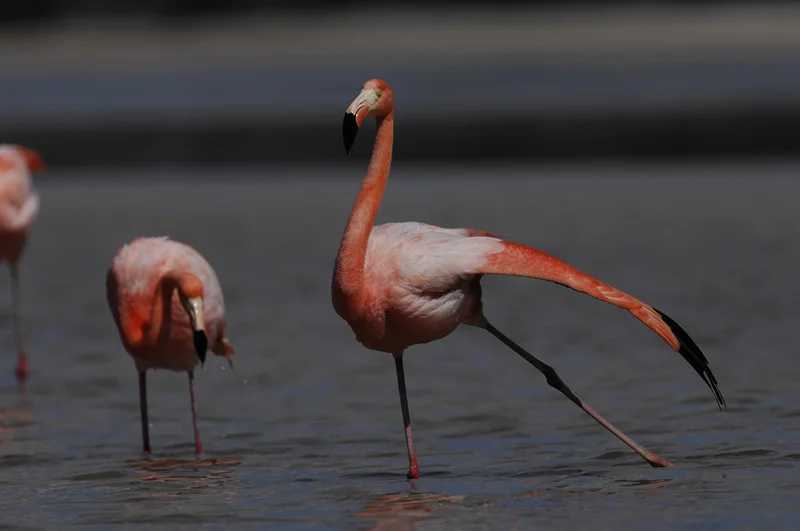
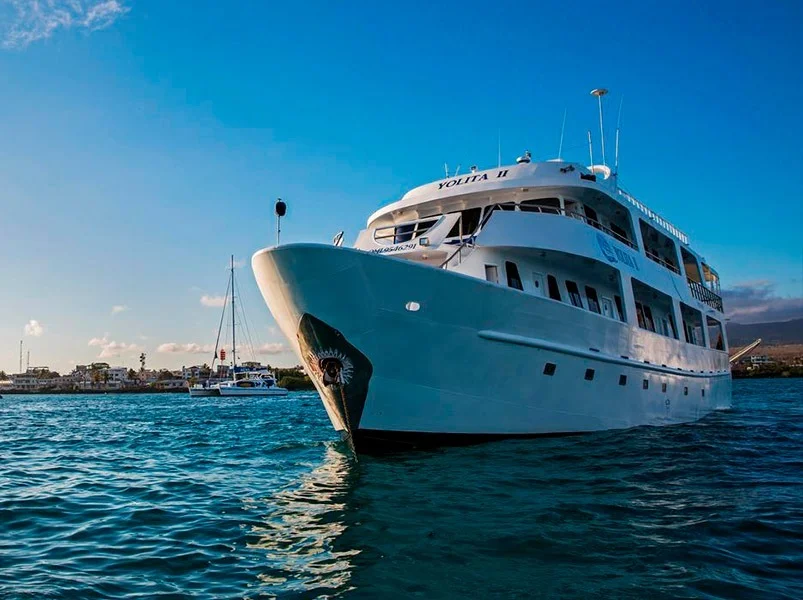
8 Day Galapagos Itinerary
Day 1: Baltra Airport & Santa Cruz Island: Bachas Beach
Take an early flight to the Galápagos Islands. Head to Bachas Beach to see Sally Light foot crabs, flamingos and sea lions.
Santa Cruz Island: Bachas Beach
Head to Bachas Beach where the sand is made of decomposed coral, making it soft and white, and a favourite site for nesting sea turtles. Spot abundant Sally Lightfoot crabs on the lava rocks along the water’s edge –these crabs will eat anything they can get their claws on! Trek to see a wide range of wildlife, including flamingos, hermit crabs, black necked stilts, and sea lions.
Day 2: Genovesa Island
Darwin Bay
Walk along the white coral sands of Darwin Bay surrounded by bustling seabirds. Follow the trail and see nesting frigatebirds, gulls, and boobies. Be sure to bring your camera to take some snaps of your new feathered friends.
Visit this sunken caldera for a great snorkelling opportunity. See large schools of tropical fish swarming near the vertical walls, and, if lucky, see a manta ray or hammer head.
El Barranco
Visit “El Barranco” aka Prince Phillip’s Steps located on the southern tip of the island for an amazing wildlife watching opportunity. Hike up the steps to see a seabird colony that is full of life including the breeding grounds for red-footed boobies and masked boobies.
Day 3: Bartolome Island & Santiago Island: Sullivan Bay
Bartolome Island
Hike to Bartolomé’s summit for a stronger perspective of the islands’ not-too-distant volcanic origins, and enjoy a panoramic view–it’s one of the best among the islands! See other Galápagos Islands in the distance as well as Pinnacle Rock, the island’s famous towering landmark. Spot Galápagos penguins—the only species of penguin found north of the Equator—walking precariously along narrow volcanic ledges at the base.
Isla Santiago: Sullivan Bay
Visit Sullivan Bay on Santiago Island to see one of its star natural attractions–striking and fascinating giant lava formations. Very few plants have managed to survive on this island due to its harsh environment and relatively new lava flow.Enjoy a walk along the lava formations before coming to a white-coral sand beach, where abundant Sally Light foot crabs and sea lions gather on shore.
Day 4: Isabela Island
Giant Tortoise Breeding Centre
Walk through the town’s wetlands to visit the Giant Tortoise Breeding Centre. Pass basking iguanas and flamingos, and head into the forest to see the gentle giants in their natural habitat at this reserve. With the giant tortoise on its way to extinction in the late 1950s, this program was established to protect these noble creatures.
Sierra Negra Volcano Hike
Hike to the rim of the 10km (6 mi) wide crater of the Sierra Negra volcano,which has the largest basaltic caldera in the Galápagos. Trek across the moon-like landscape of the lava fields and fumaroles, and enjoy spectacular views looking north toward Fernandina and the rest of Isabela Island. The volcano last erupted in October 2005, making it the most recent eruption of the Galápagos.
Day 5: Isabela Island: Elizabeth Bay & Urbina Bay
Elizabeth Bay
Head out by panga to explore, keeping an eye out for wildlife hiding among the mangroves. Search for marine turtles, rays, and flightless cormorants in the sheltered waters. Also spot blue-footed boobies, penguins, and pelicans feeding on the abundant marine life.
Urbina Bay
Visit Urbina Bay for a unique walk among a massive marine reef that was raised out of the water in 1950 during an uplift. See “sculptures” of dried coral and other ocean formations while touring the area on foot. Urbina Bay also offers great opportunities to see land iguanas that have astonishingly yellow skin,flightless cormorants, brown pelicans as well as marine turtles and rays.
Day 6: Isabela Island: Tagus Cove & Fernandina Island: Punta Espinoza
Isabela Island: Tagus Cove
Visit Tagus Cove, an Isabela Island anchorage site that was popular among whalers and pirates. Tour the area on foot for spectacular views of Darwin Lake(a spherical saltwater crater), the bay, and Darwin and Wolf volcanoes. Upon landing, take the wooden stairway to the trail entrance, and follow the trail through a dry vegetation zone. Continue on an ascent to a promontory made up of spatter cones (small volcanic cones.
Fernandina Island: Punta Espinoza
Tour a number of different trails at this not-to-be-missed landing site that’s home to some of the largest colonies of marine iguanas and sea birds. Follow the path along the beach and across lava flows for a unique opportunity to explore one of the least-visited areas of the Galápagos.
Day 7: Rabida Island & Santiago Island
Rabida Island
Arrive at a red sand beach at Rábida to explore its trails. A short trail leads to a saltwater lagoon; another trail goes past the lagoon to the interior, where the revered palo santo trees grow. (When burned, the branches of this tree give off a pleasing aroma and ward off mosquitoes.) Head back to the beach to see prehistoric-looking pelicans nesting among low-lying bushes–it’s a rare treat to watch parent pelicans return with gullets full of fish for the squawking youngsters.
Santiago Island: Buccaneer Cove
Jump into the panga and cruise alongside high cliffs and rock formations on this visit to Bucaneer Cove, which was a favourite hideout for pirates looking to stock up their boats with food and water. Spot sea lions relaxing on the beach and sea birds nesting in the cove–there’s lots to see at this site.
Day 8: Daphne Island & Quito
Visit Daphne, a tiny conical island, home to nesting blue-footed boobies,frigatebirds, Darwin’s finches, and other wonderful wildlife before flying back to Quito.
Travel to Daphne, a tiny conical island, home to nesting blue-footed boobies,frigatebirds, Darwin’s finches, and a variety of marine life. Observe from the boat as this island is dedicated to scientific research. This island was where Dr.Peter Grant conducted a long-term study of Darwin’s finches.
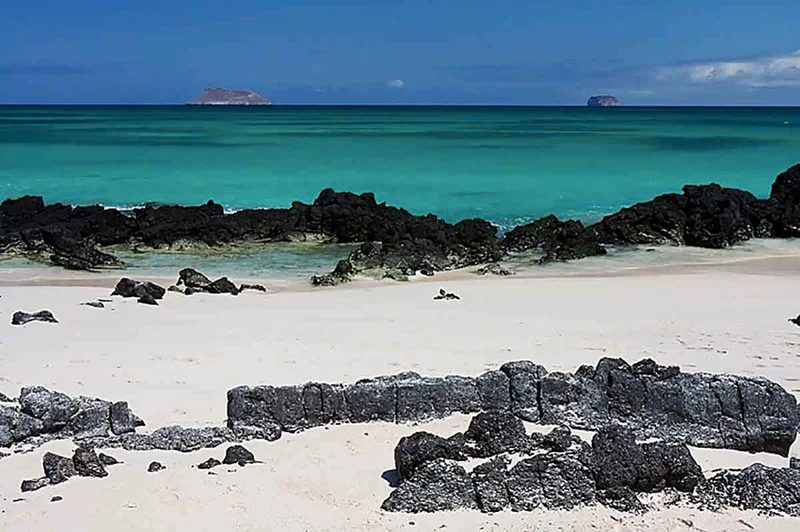
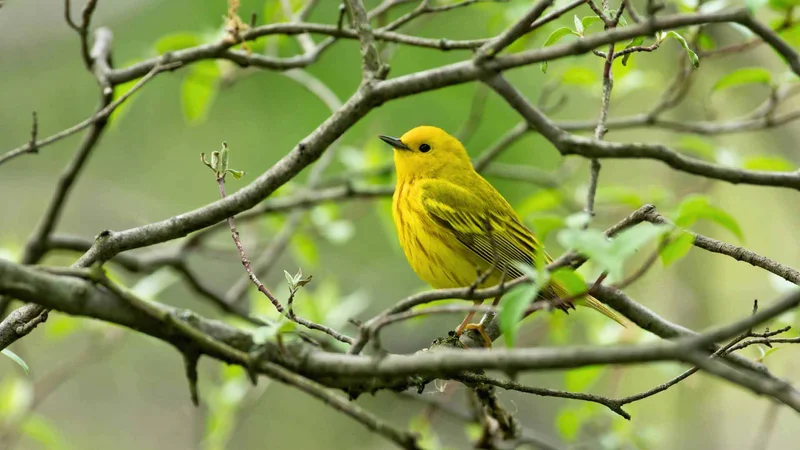
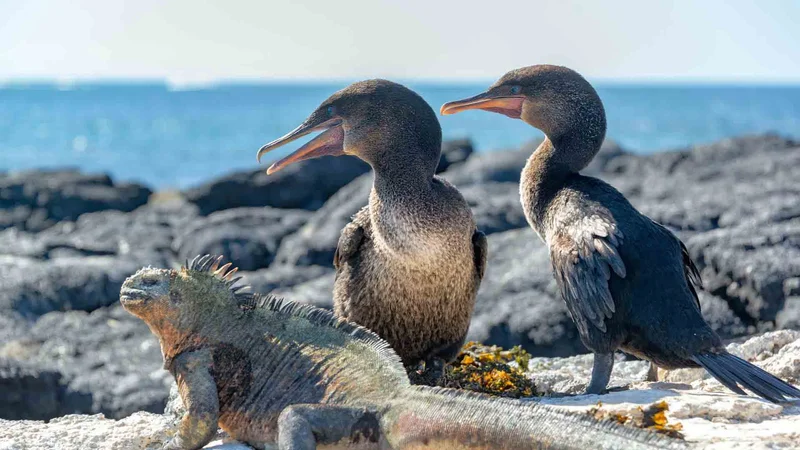
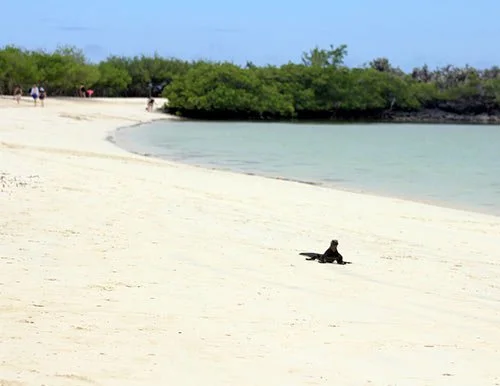
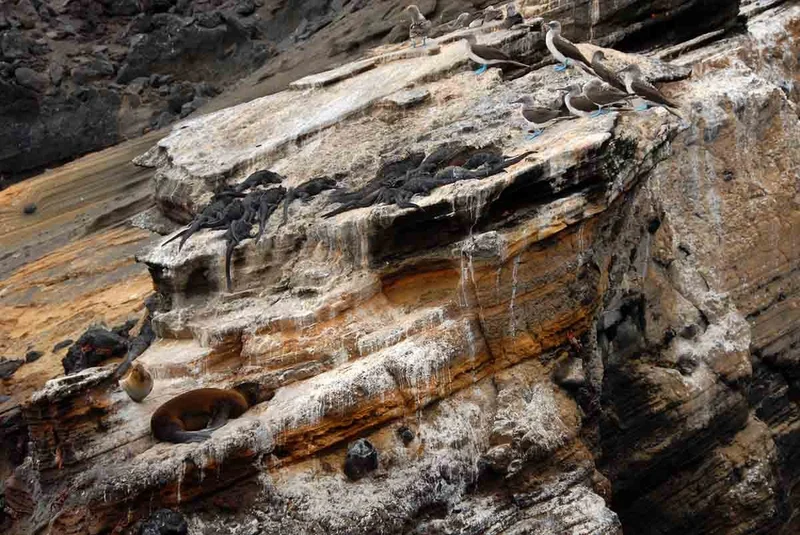
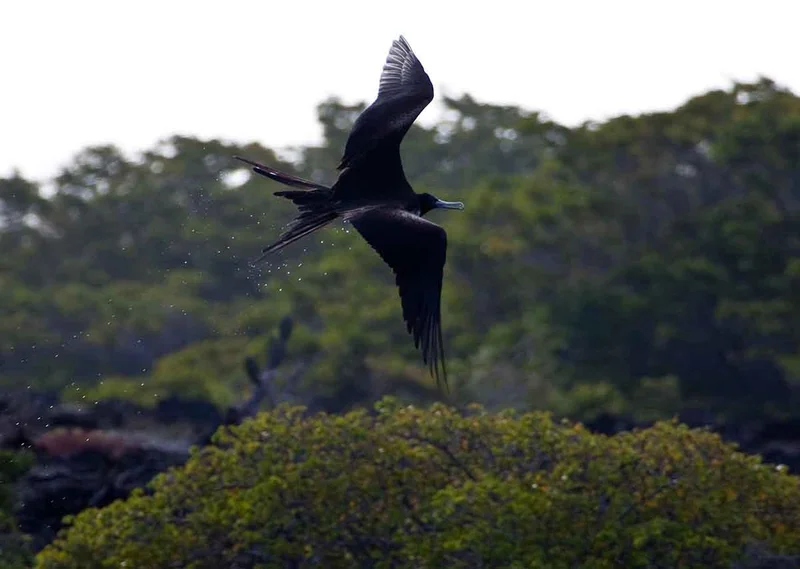
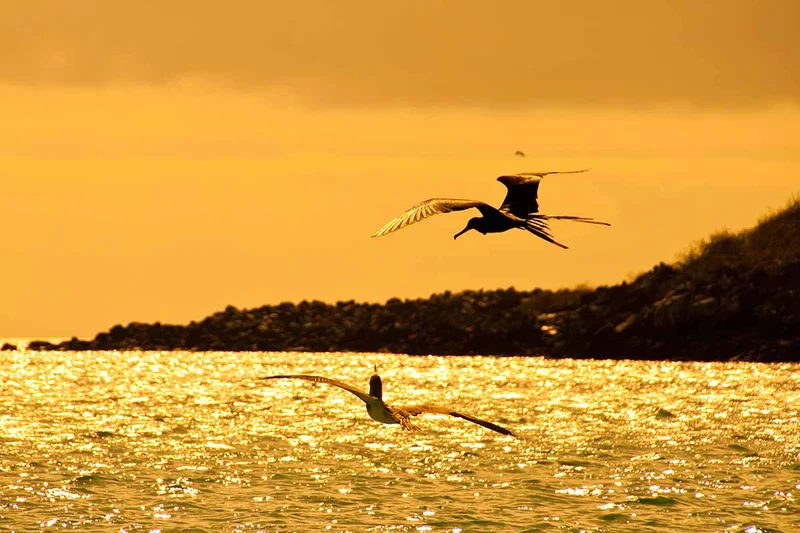
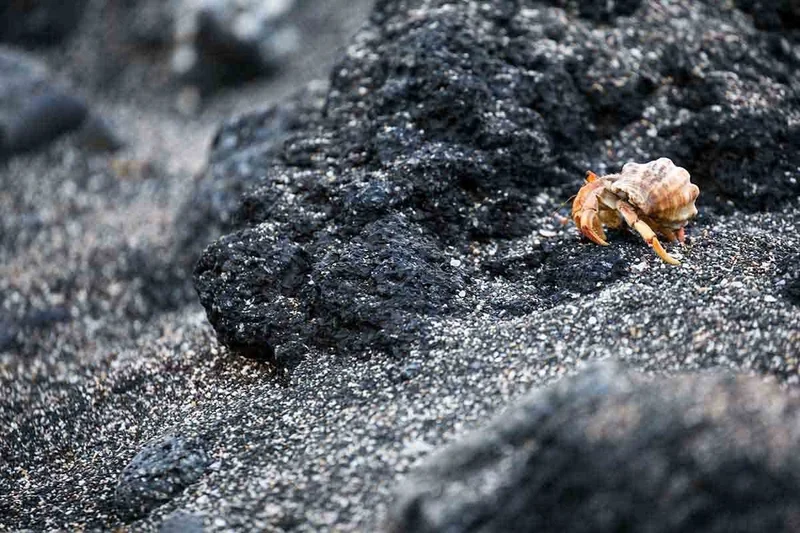
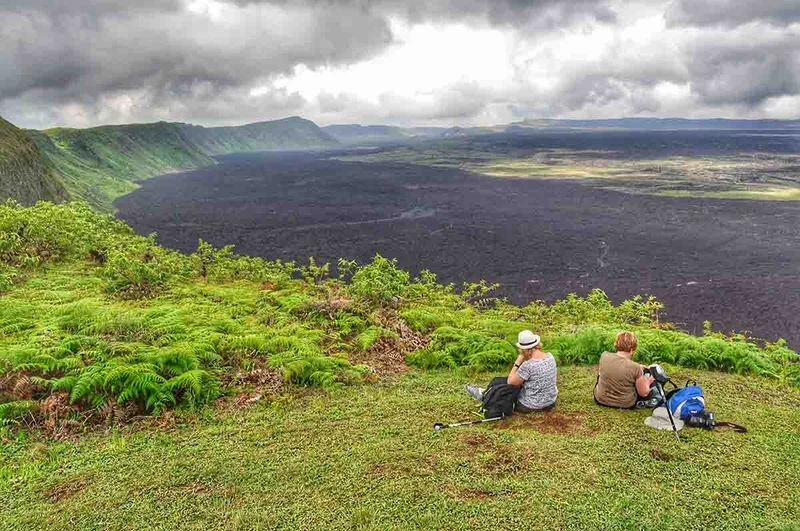
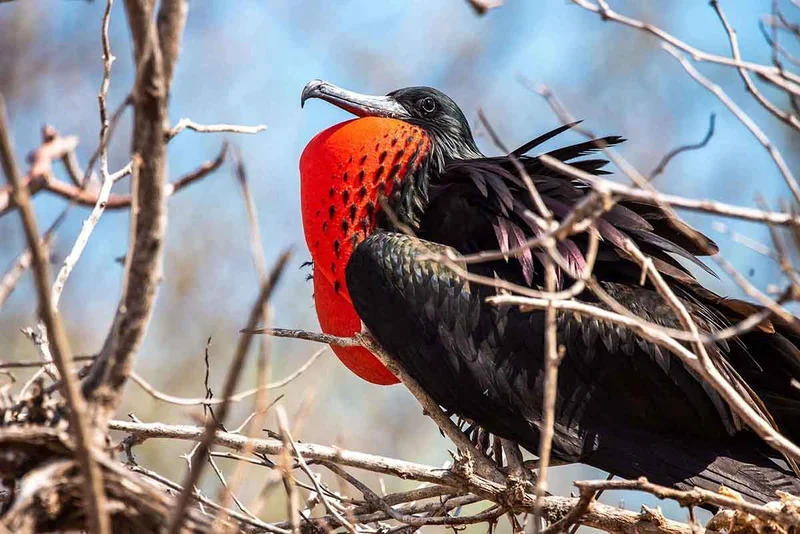
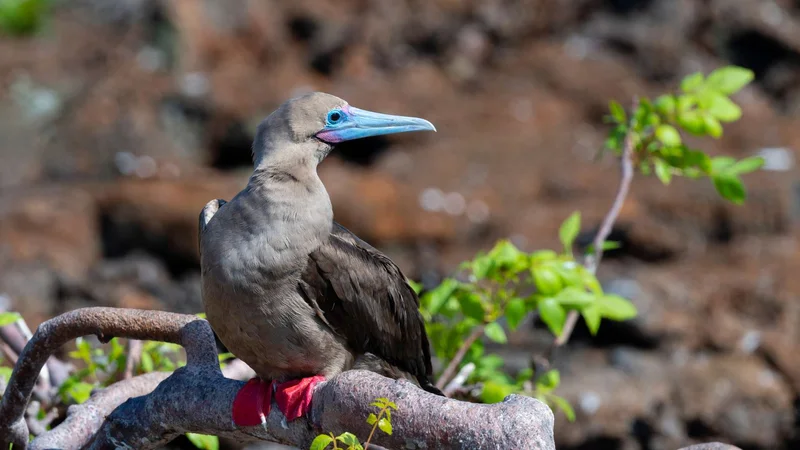
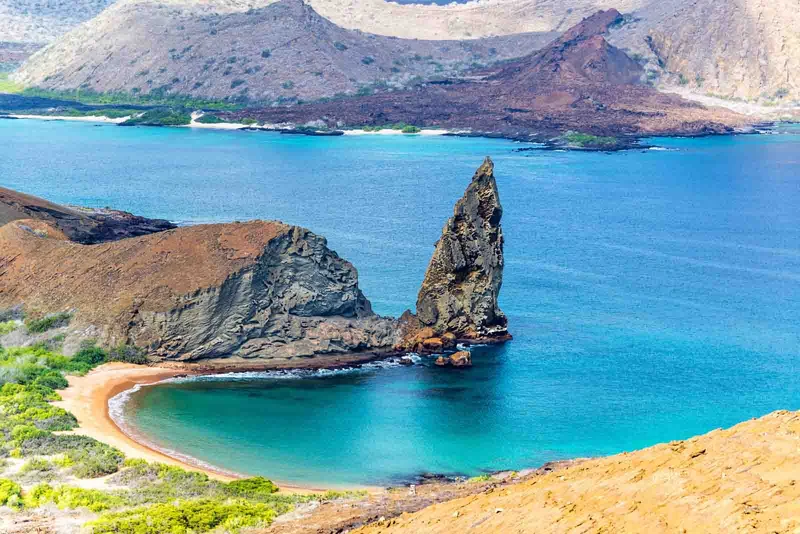
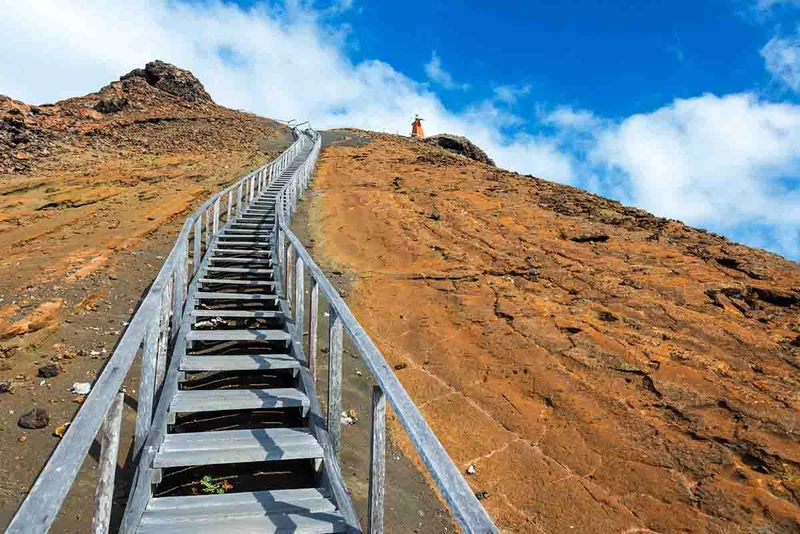
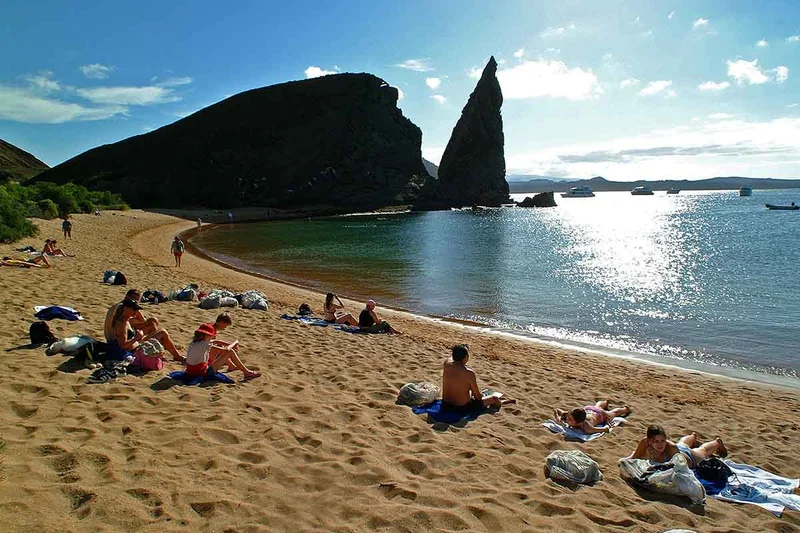
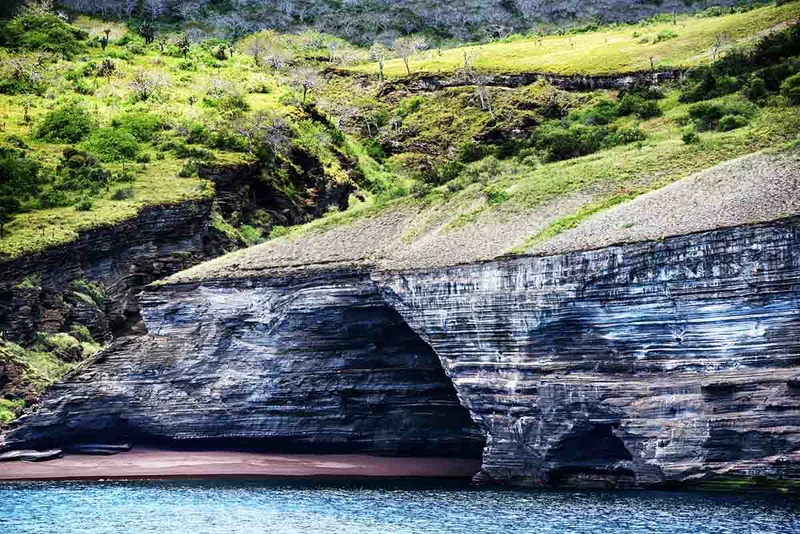
8 Day Galapagos Itinerary Includes
- All programed visits as per itinerary with specialized naturalist bilingual guide
- Accommodation in twin/double cabin with private facilities (surcharge for suite)
- All meals on board, drinking purified water, coffee and tea
- Snorkeling equipment (fins, mask & snorkel) & sea-kayaks
- Transfers within the islands on cruise dates as per itinerary
- Personalized 24/7 assistance during tour.
8 Day Galapagos Itinerary Does not Include
- Airfare to/from Galapagos from/to Mainland Ecuador (to be added)
- Galapagos National Park Entrance Fee US$200 per person (in cash only upon arrival)
- Galapagos Migration Card US$20 in cash per person (at Mainland’s Airport)
- Alcoholic/soft drinks, personal expenses, extras, and tips
- All sizes wet-suits for rent on board (in cash)
- Travel, medical & cancelation Insurance and any services on Mainland
- Other services not specified in the program.
8 Day Galapagos Itinerary Highlights
- Encounter entire armies of marine iguanas on the west side of Isabela
- Visit the nesting sites of tropical Galapagos penguins and flightess cormorant
- Explore Fernandina the youngest island in the archipelago, still volcanically active
- Snorkel in the Bolivar channel with the possibility of swimming with whate sharks
Itinerary Map
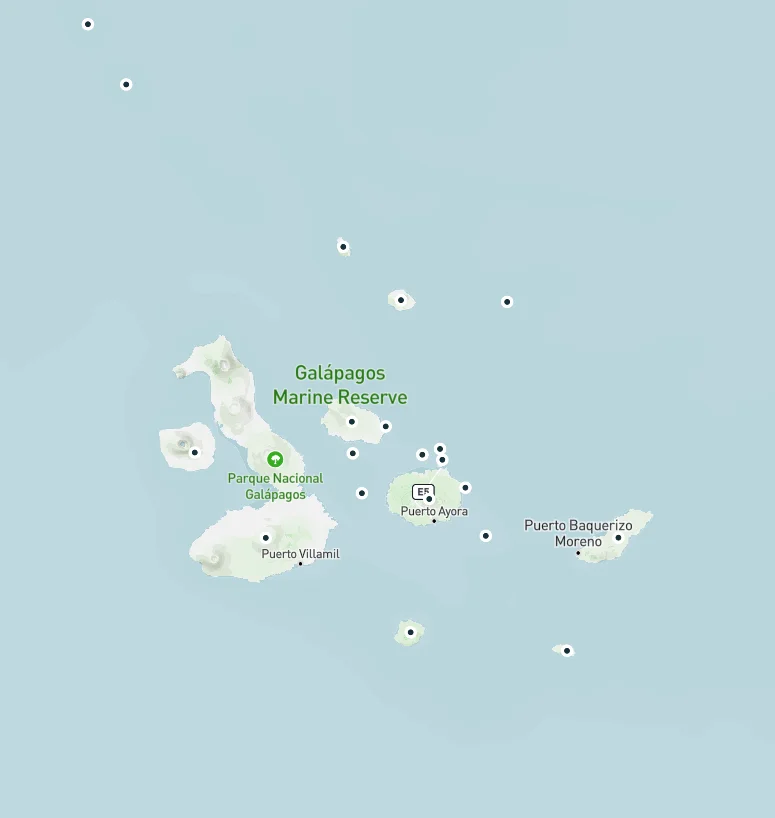
Reviews
Animals you might see on this itinerary:
More information about the Galapagos Islands you visit in this 8 day itinerary:
8 day western Galapagos islands cruise | Yolita Yacht II Itinerary A - Yolita II Yacht
Why travel with us?
Similar Itineraries
